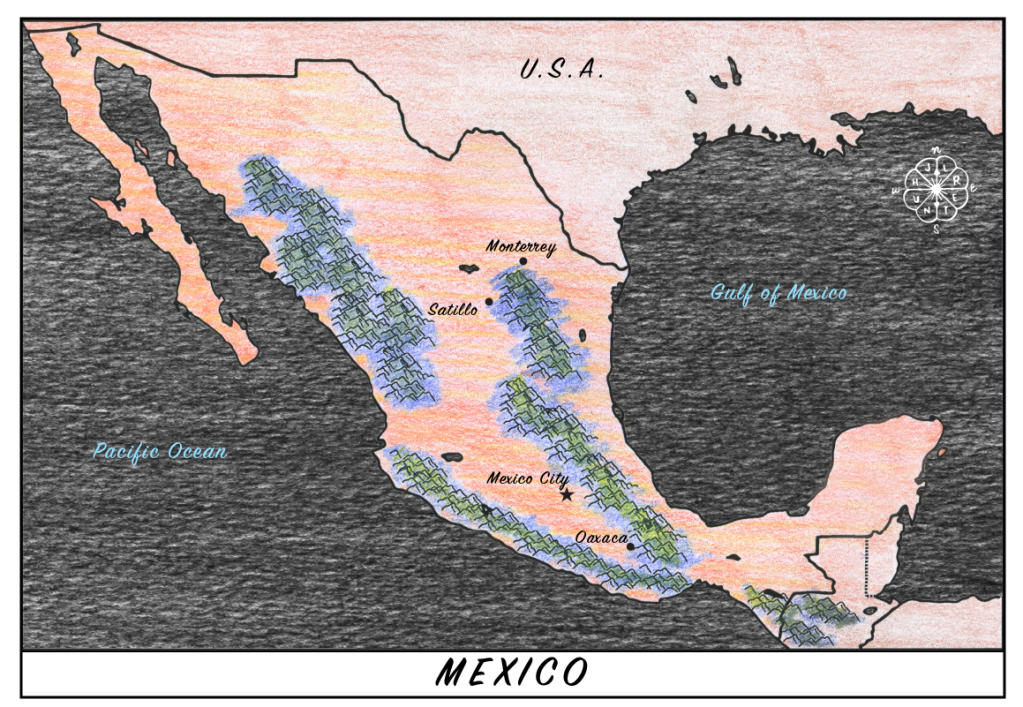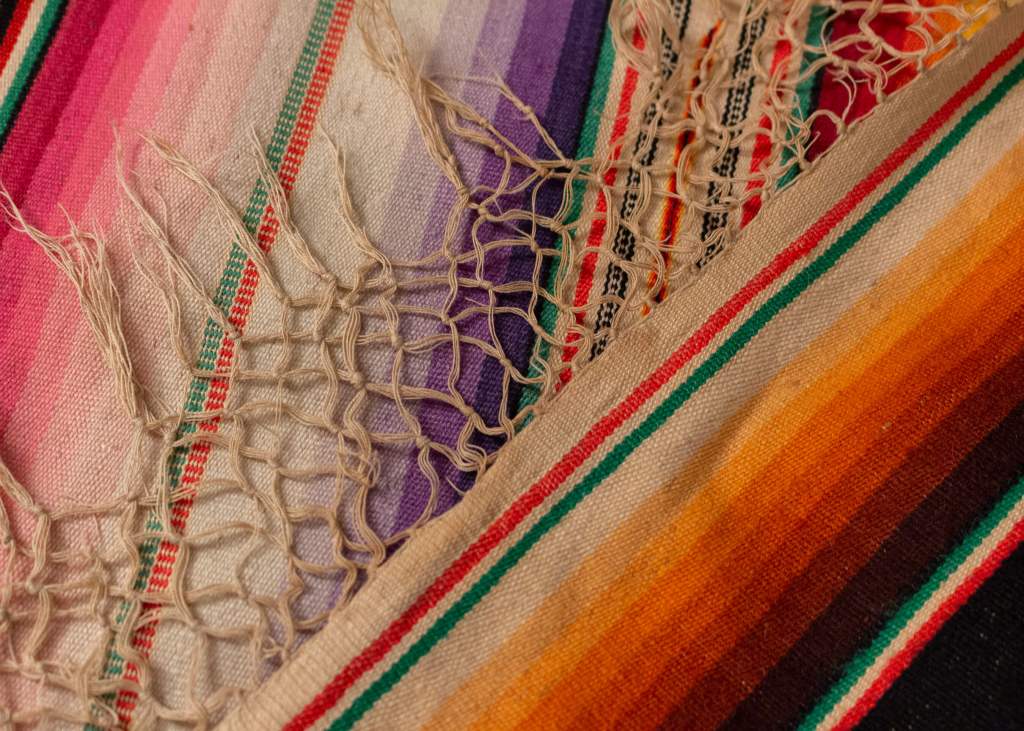

Pre-Columbian Mexico
The region that encompasses modern day Mexico is one of only a few places in the world where civilization was thought to arise independently. Nearly 4,000 years ago many complex cultures began to form, eventually evolving into widely known civilizations such as the Zapotecs, Mayans and Aztecs. By the 15th century a confederation of various city-states centered in Tenochtitlan (modern day Mexico City) would become the Aztec empire. In the period prior to the arrival of the Europeans, the Aztecs were the dominant military and cultural hegemon in the region and would exact tribute from their neighbors. By the time the Spanish arrived in 1519, many of these neighbors would ally with the conquistadors. A devastating outbreak of smallpox in combination with the advance of a Spanish military composed of large numbers of Indigenous allies, would ultimately lead to conquest of the Aztec empire and the establishment of colonial New Spain in 1521.

New Spain
Spanish colonial power would be exerted over most of the Western hemisphere, extending from as far north as Alaska to the southern tip of Argentina. The Spanish rewarded their Indigenous allies in many ways such as giving them control over territories or exemption from tribute to the crown. One group to receive such privileges were the Tlaxcalans. The Tlaxcalans had a tradition of simple weaving using cotton and other vegetal fibers on backstrap looms, but the Spanish helped them develop a woolen textile industry with the introduction of sheep and European looms. This allowed novel approaches to weaving while building upon firm traditions. Just 20 years after the conquest of the Aztecs, silver was discovered in Northern Mexico, which would make it both the economic engine of the colony and an enormous source of wealth for the Spanish Empire. The Spanish would call on the Tlaxacans to move northward and colonize this territory from the other Indigenous people of the area. The terrain of Northern Mexico was rugged with expansive open ranges and excellent pastorage, making it ideal for raising sheep and cattle; by the 17th century flocks of sheep were estimated in the hundreds of thousands. Texile mills and grain mills were at the center of these flocks in what would become an expansive system of haciendas.

The Saltillo Sarape
Sarape is the New World Spanish term for blankets with a central opening around the head that are worn either around the shoulders or over the head like a poncho. It’s unclear how the sarape originated, but scholars believe Saltillo sarapes emerged as the result of Indigenous weaving traditions blended with those of the Spanish colonizers. The new colonial economy of Northern Mexico was based on haciendas or ranches and this fusion created a singular garment which was first used by the vaqueros or horsemen who worked and ran them. The sarape became a status-symbol for landowners and ranchers, because of the stringent sumptuary laws dictated by the Spanish government, combined with the highly stratified class system devised to control and divide the population.
The classic design composition of the Saltillo sarape features a diamond in the center, which when folded in half or worn over the shoulders looks like a wide triangle framing the head and face. The diamond shape is composed of interlocking geometric patterns. Highly detailed patterns filled in the background of the design, such as small diamonds or zig-zags arranged in vertical rows. The whole was framed by a narrow border, although in later iterations the border disappears. The fringe, composed of the cotton warp threads, was often delicately netted or knotted.

Popularization of the Saltillo Sarape
Prior the 19th century, Saltillo sarapes were not largely traded outside the region. It wasn’t until the 19th century that sarapes were traded north to New Mexico and the motifs commonly found in the sarapes such as the diamond and zigzag motifs were introduced to Rio Grande weavers. Trade fairs – another Spanish import – were essential in popularizing sarapes and furthering trade. Spain only allowed the ports of Vera Cruz and Acapulco, so a busy trade fair system developed in Mexico. With the advent of the railroad at the end of the 19th century and development of tourism more and more sarapes were purchased as souvenirs, and with the introduction of bright new synthetic dyes, sarapes would evolve into the rainbow sarapes we know and love today.

We sourced our information from: Sarape Textiles from Historic Mexico: The Mexican Sarape: A History, by William Wroth; An Analysis of the Saltillo Style in Mexican Sarapes, by Katharine Drew Jenkins; Saltillo Sarapes, A Survey: 1850-1920, by Mark Winter & Thomas McCormick; Sarape de Saltillo edited by Museo Franz Mayer; and Hali Magazine


